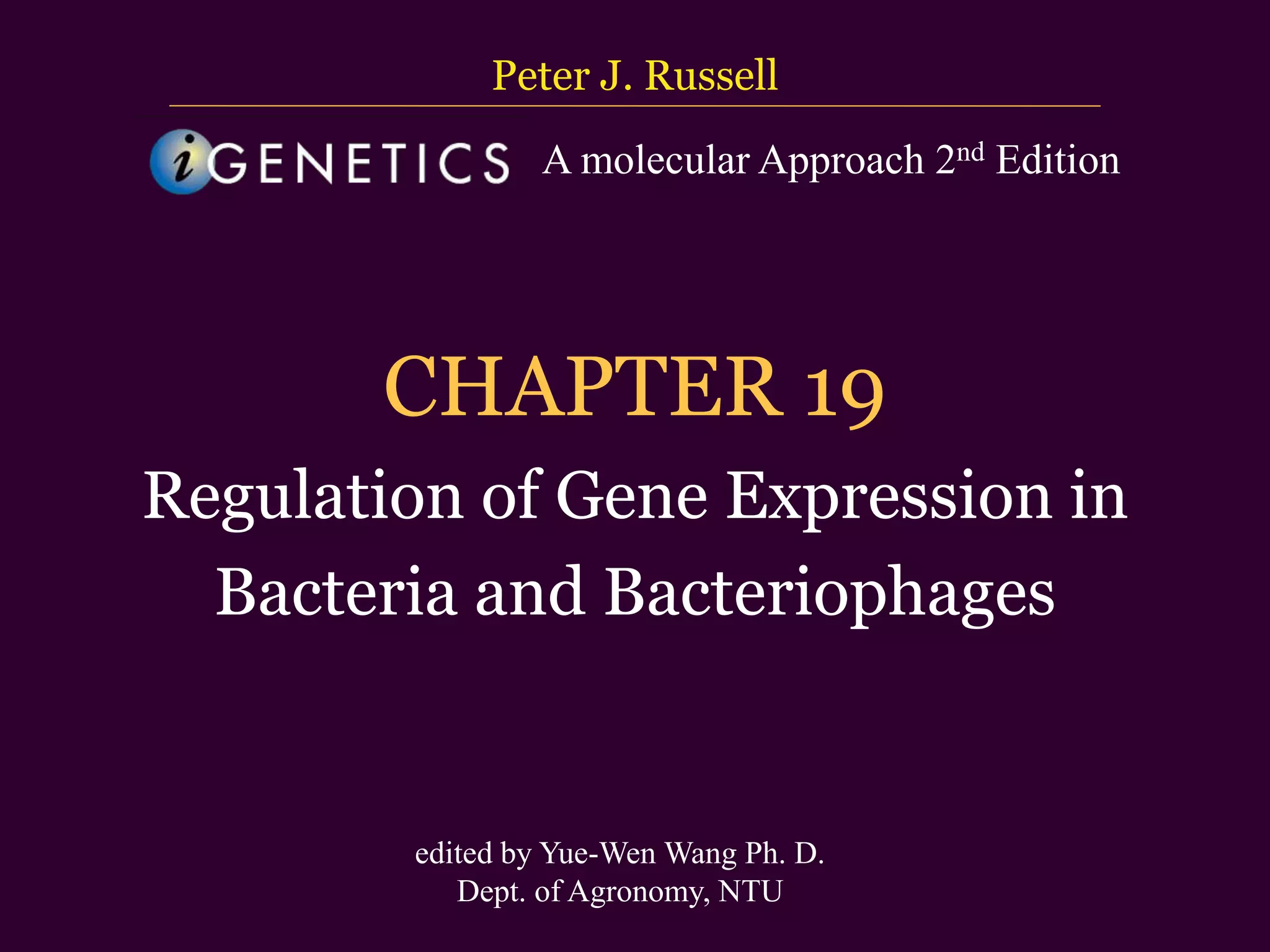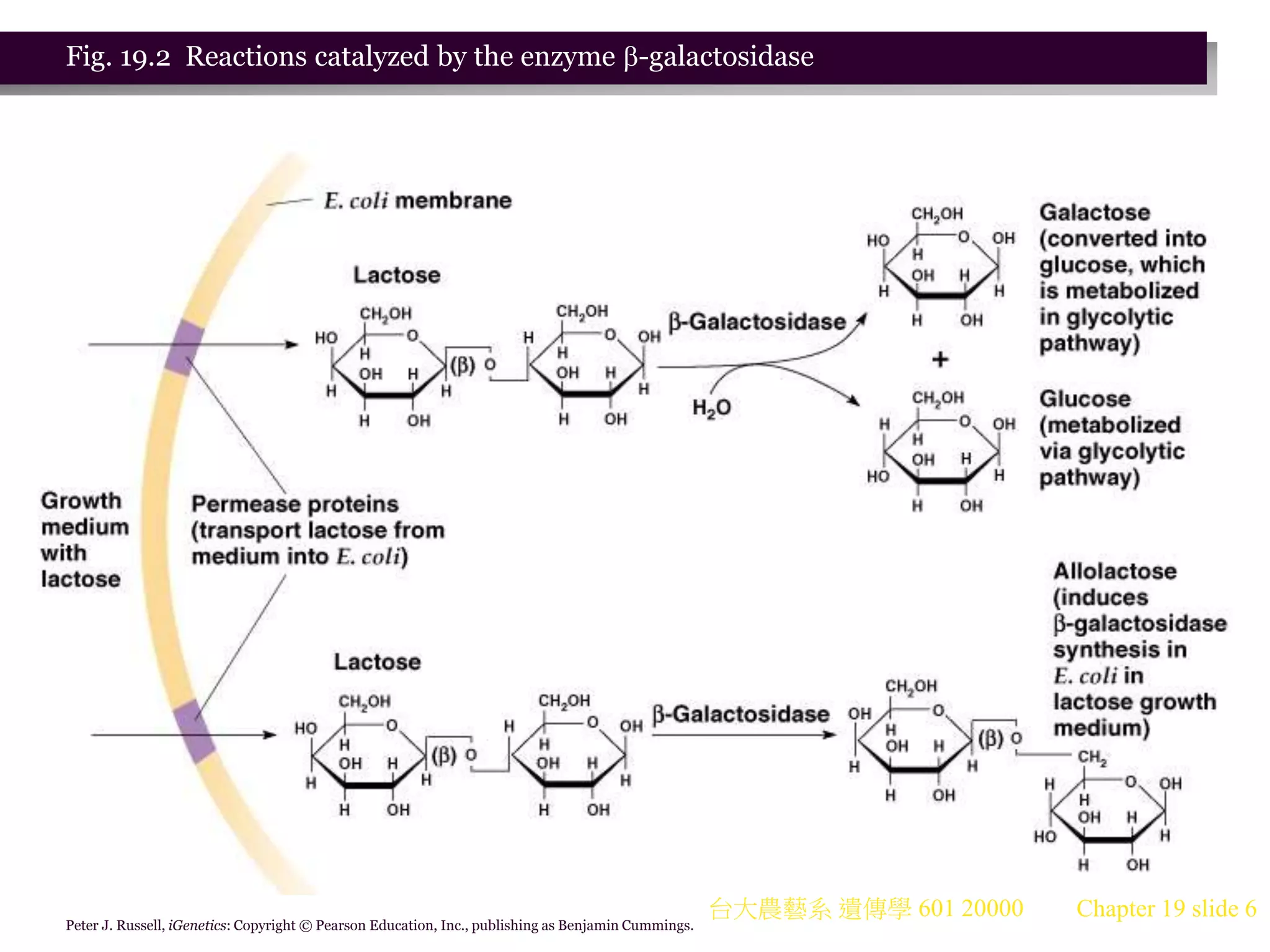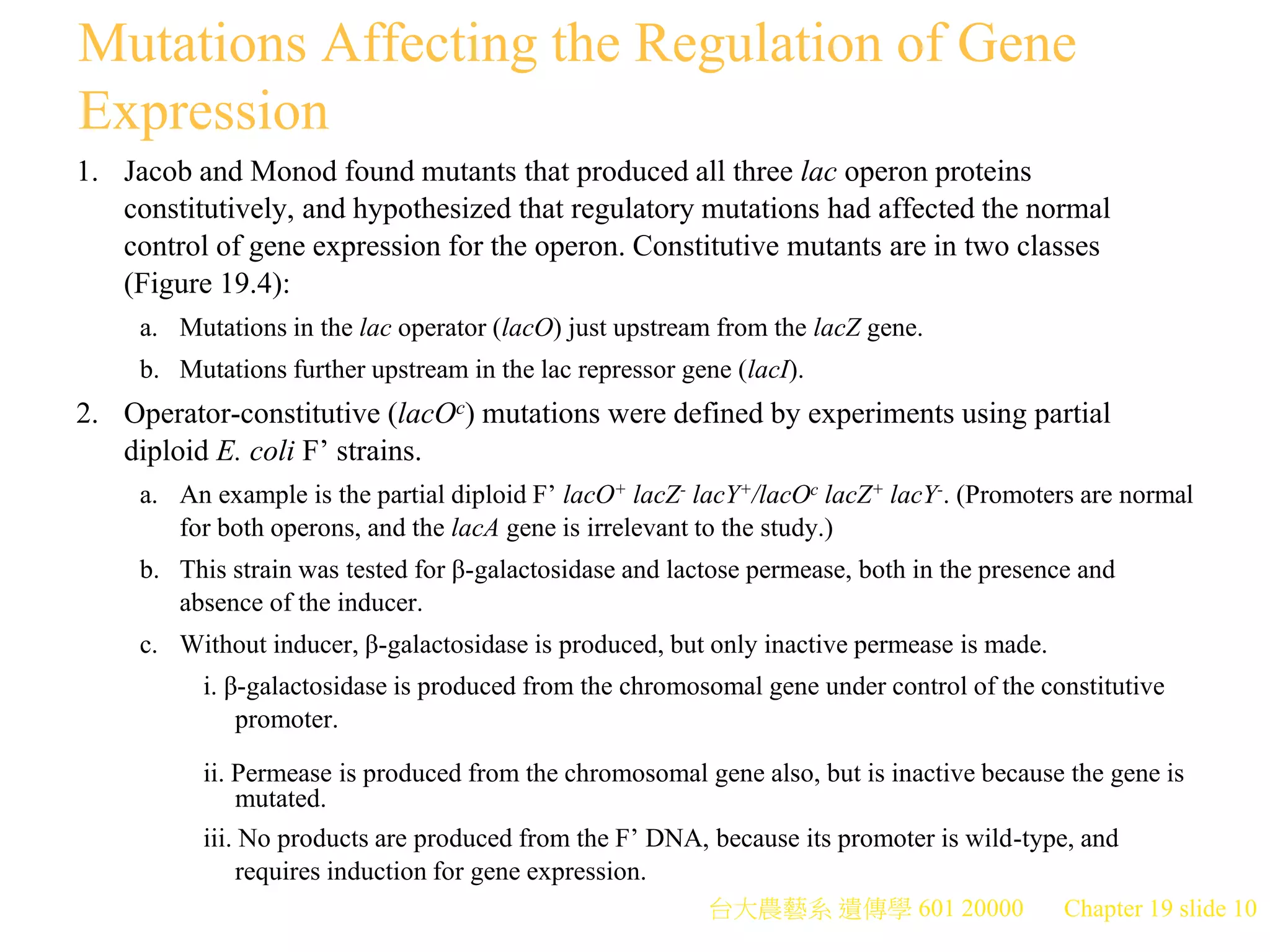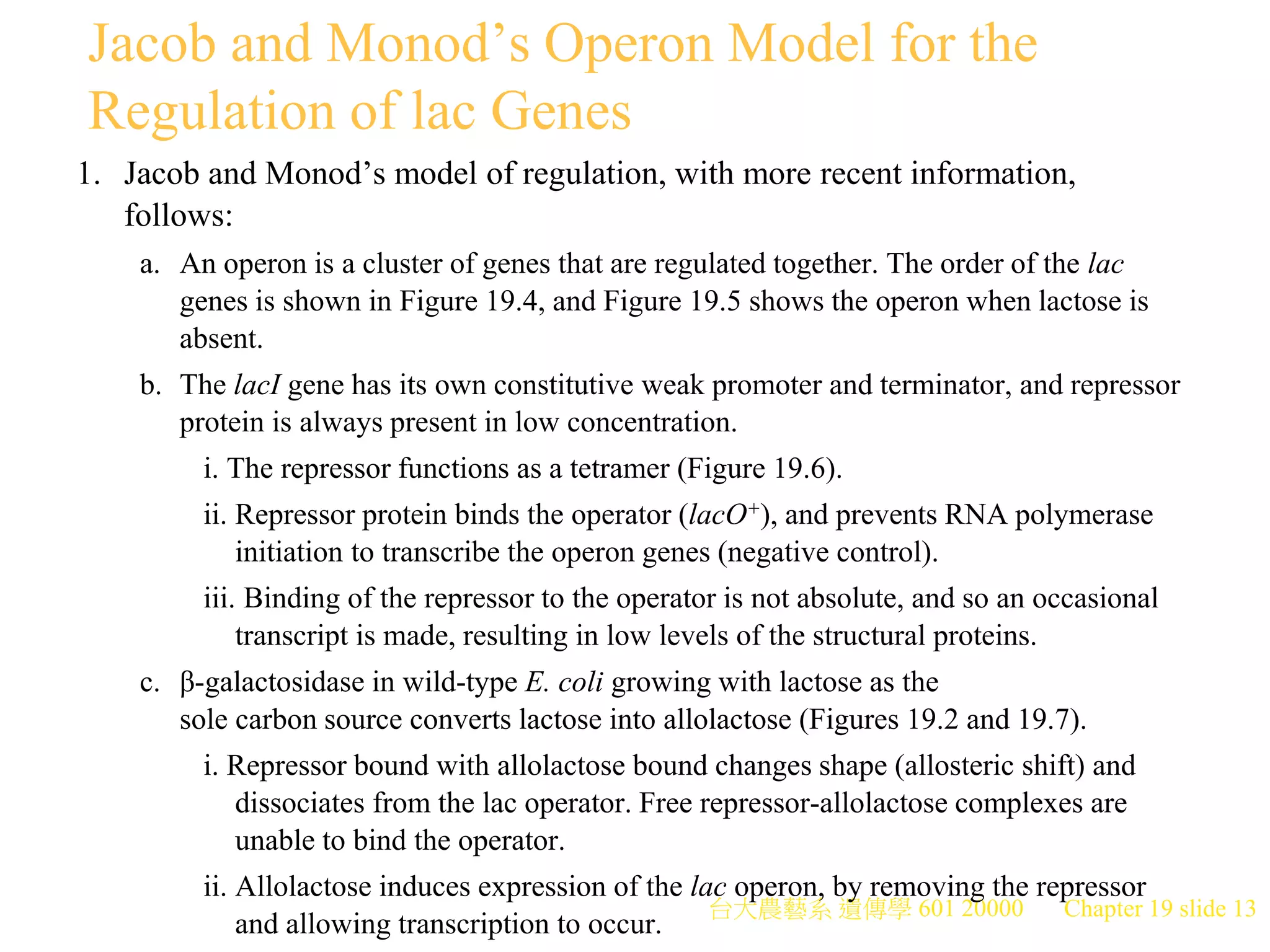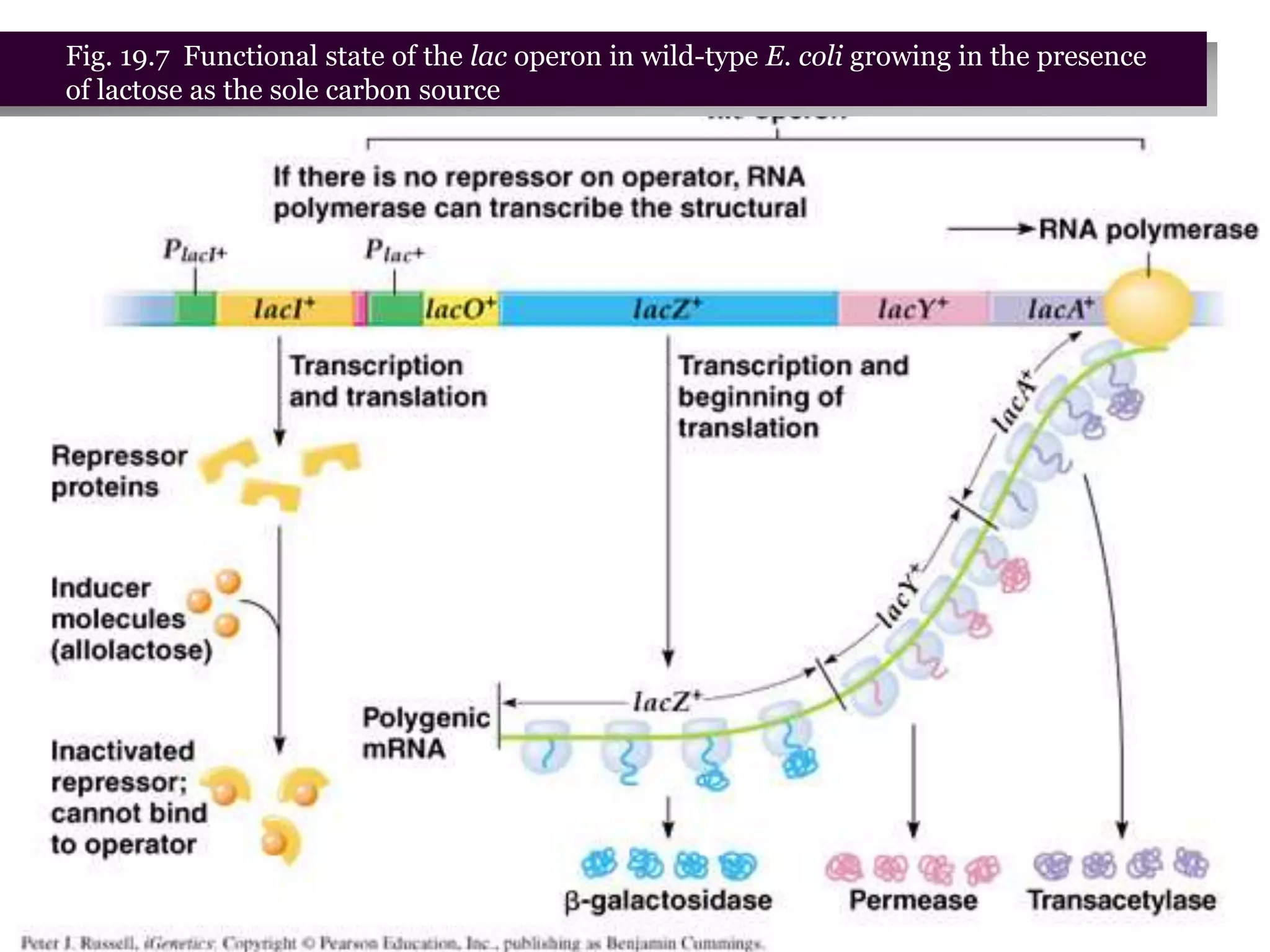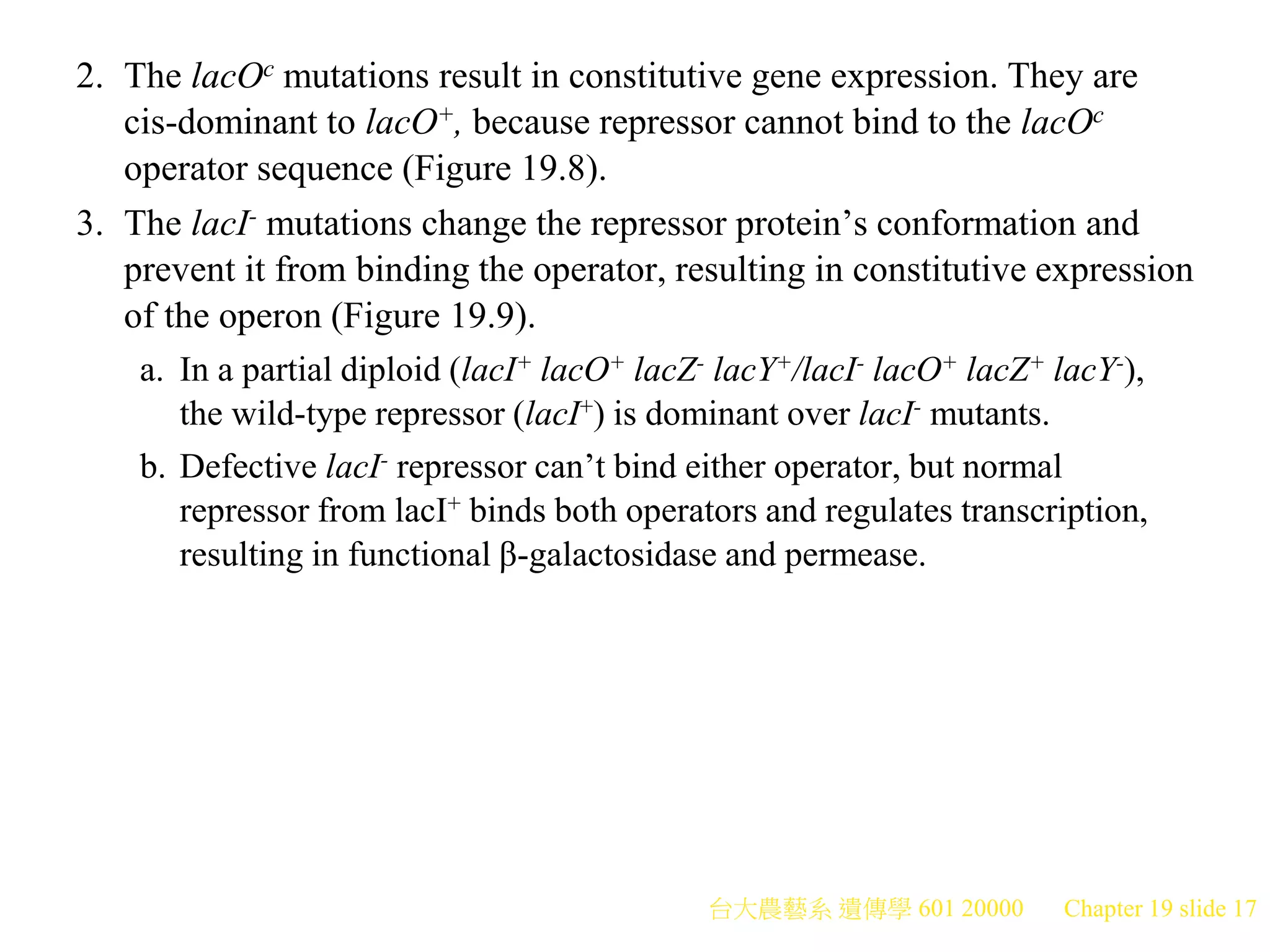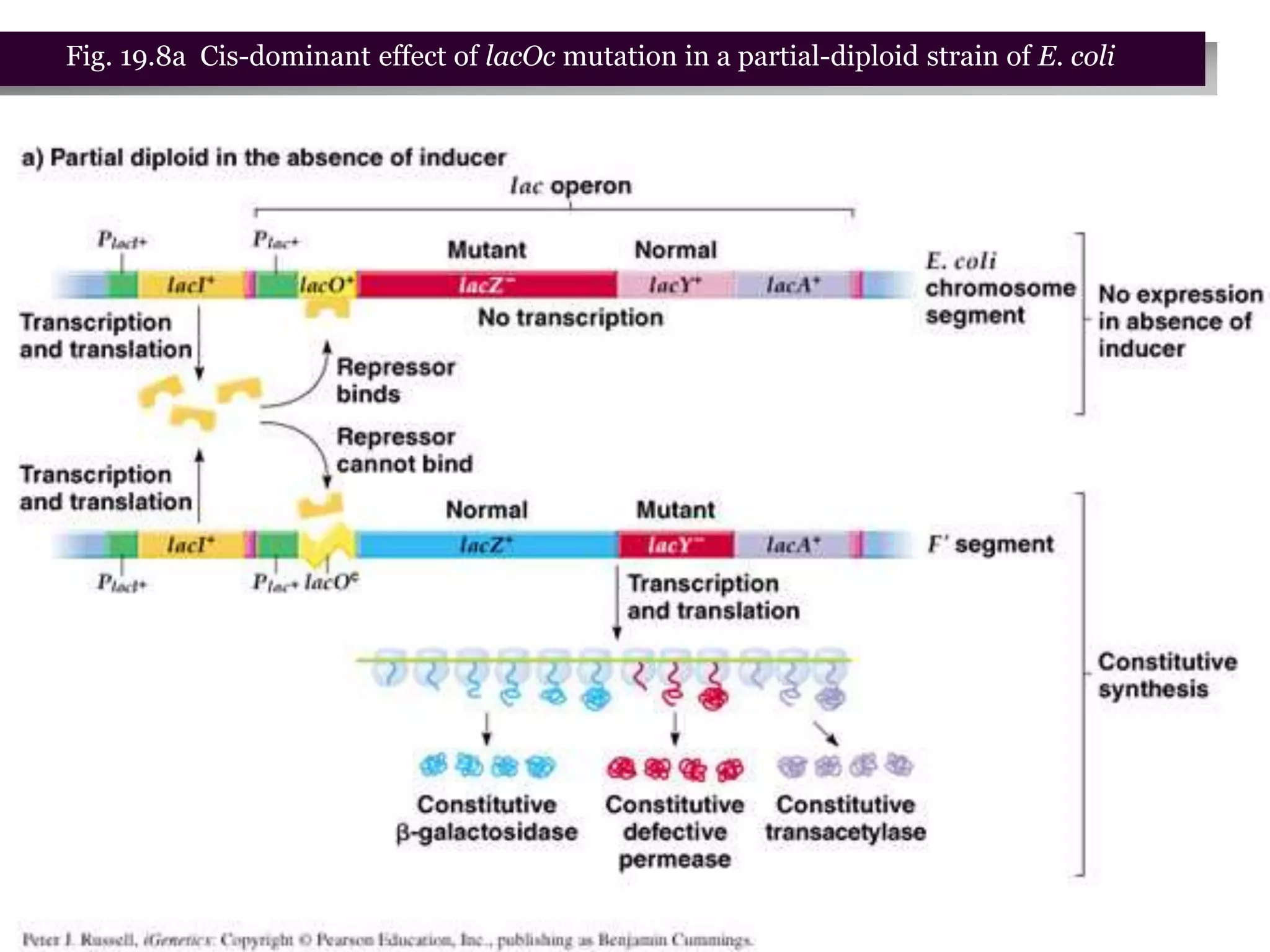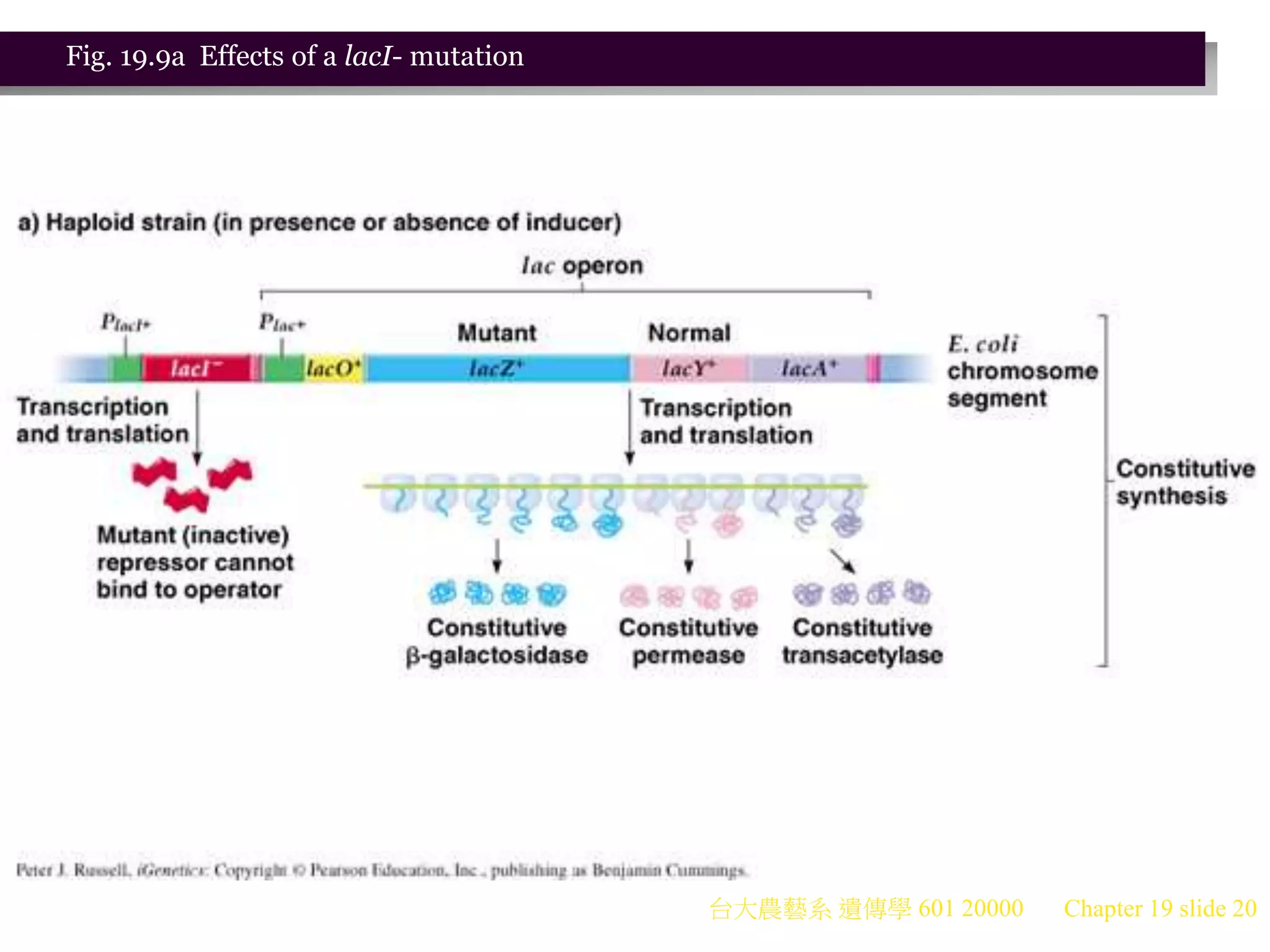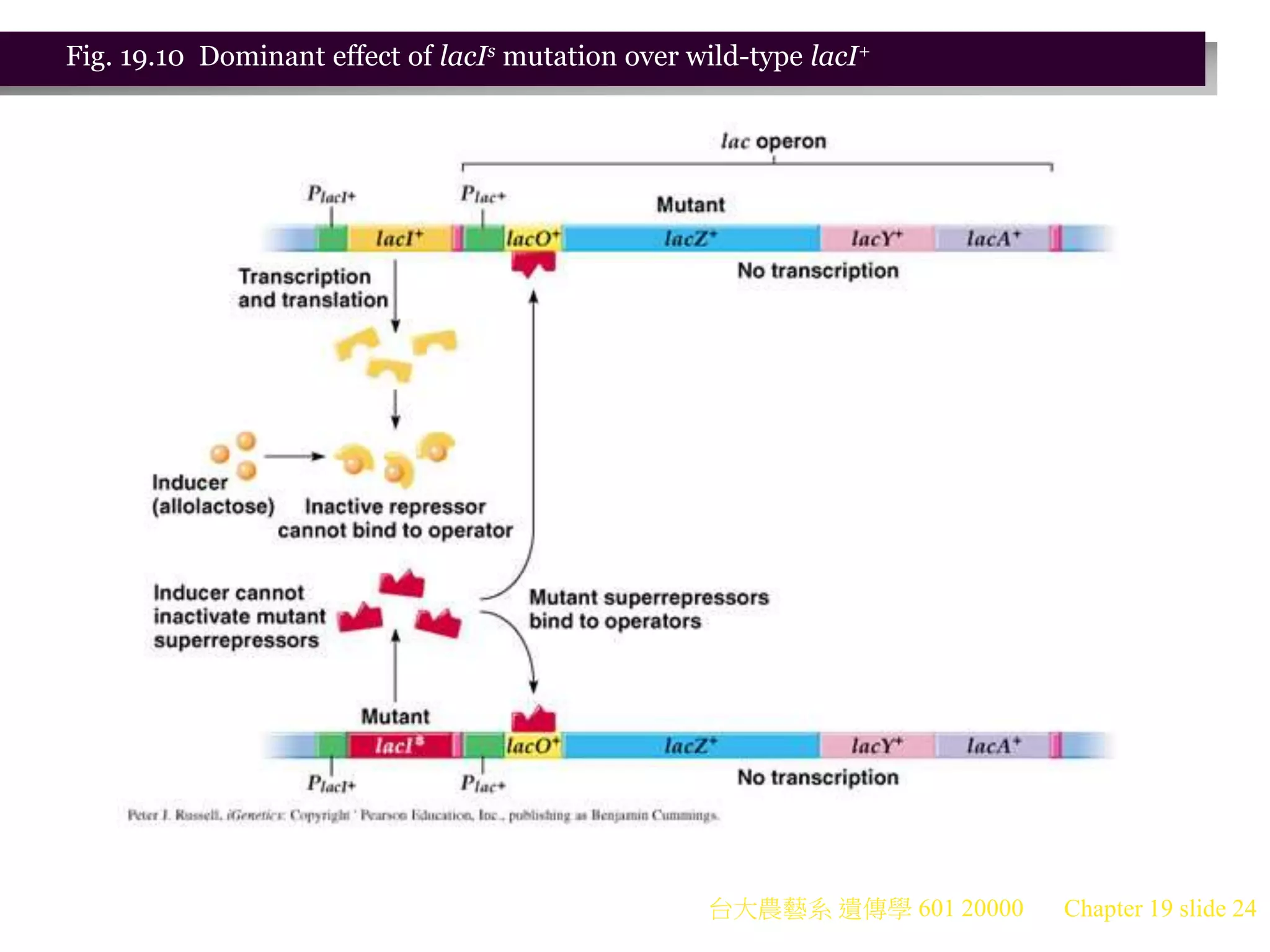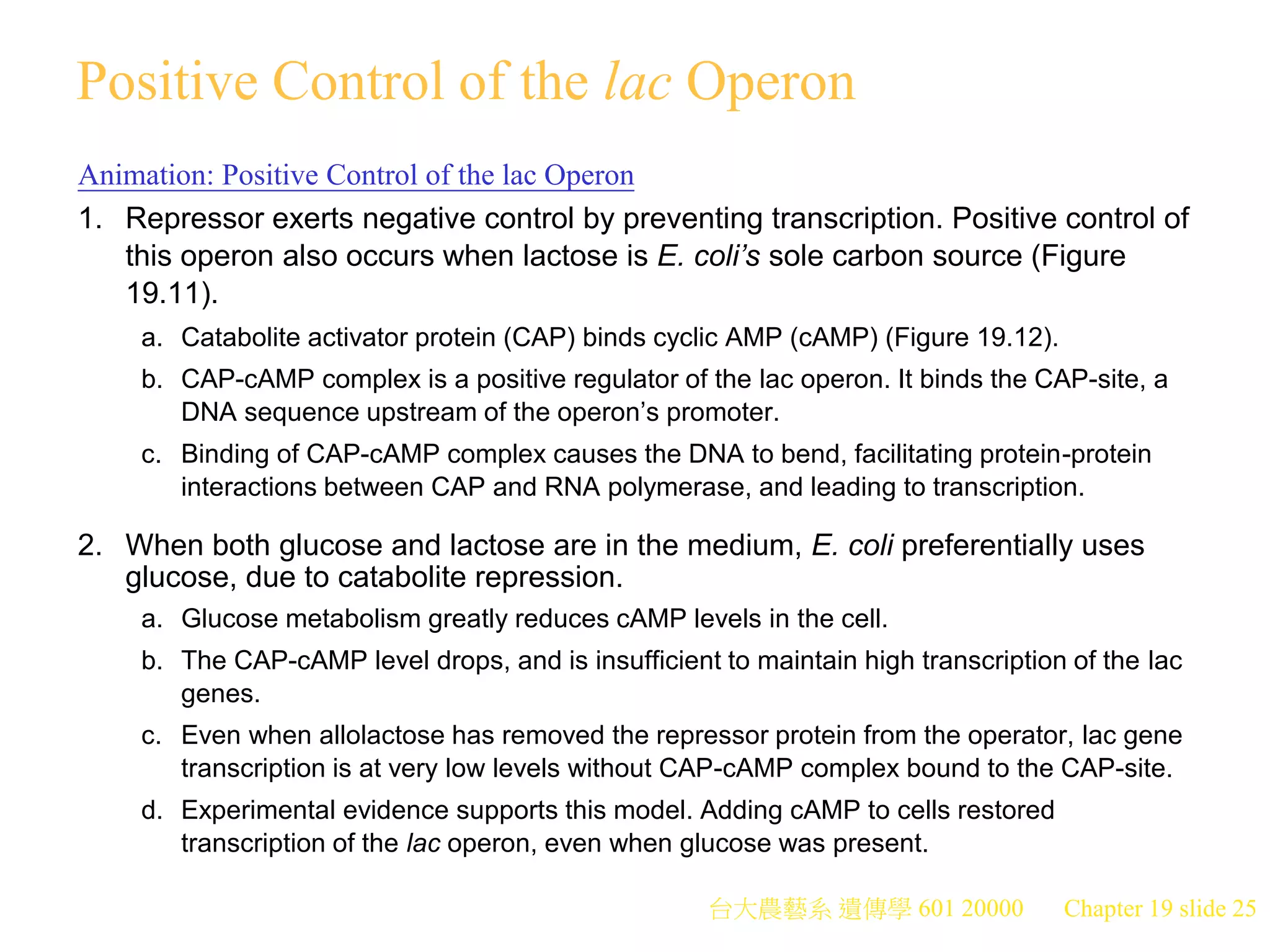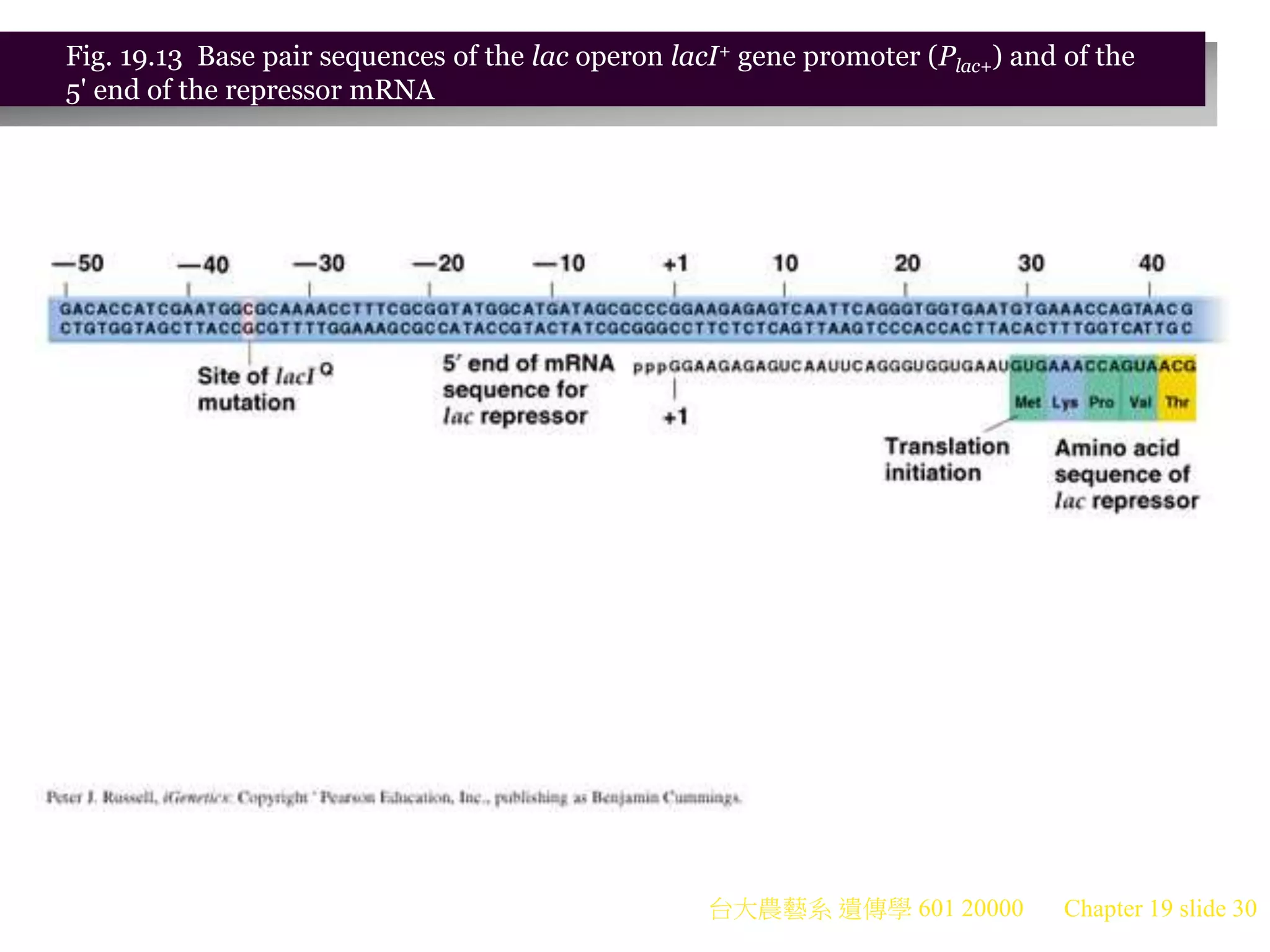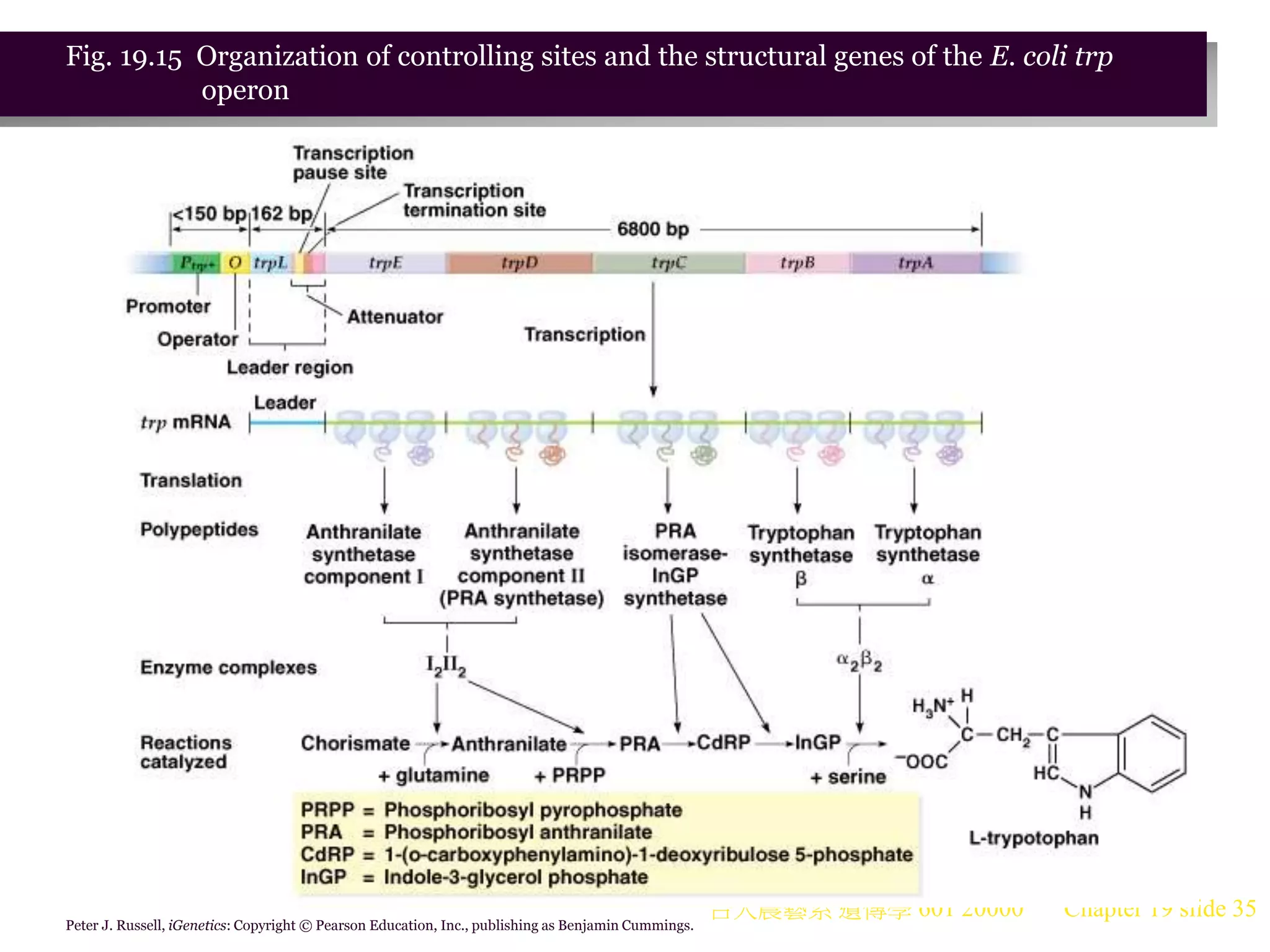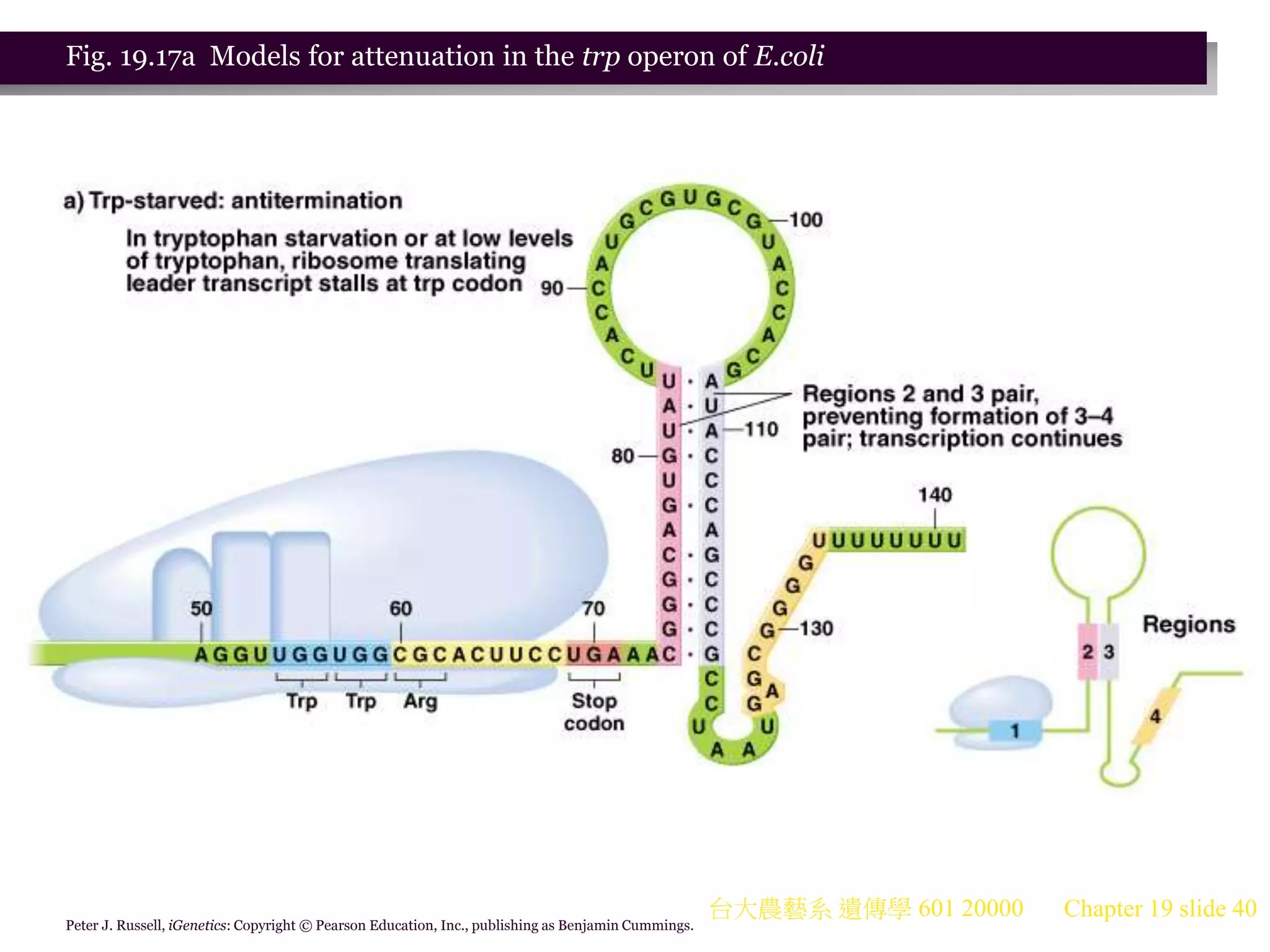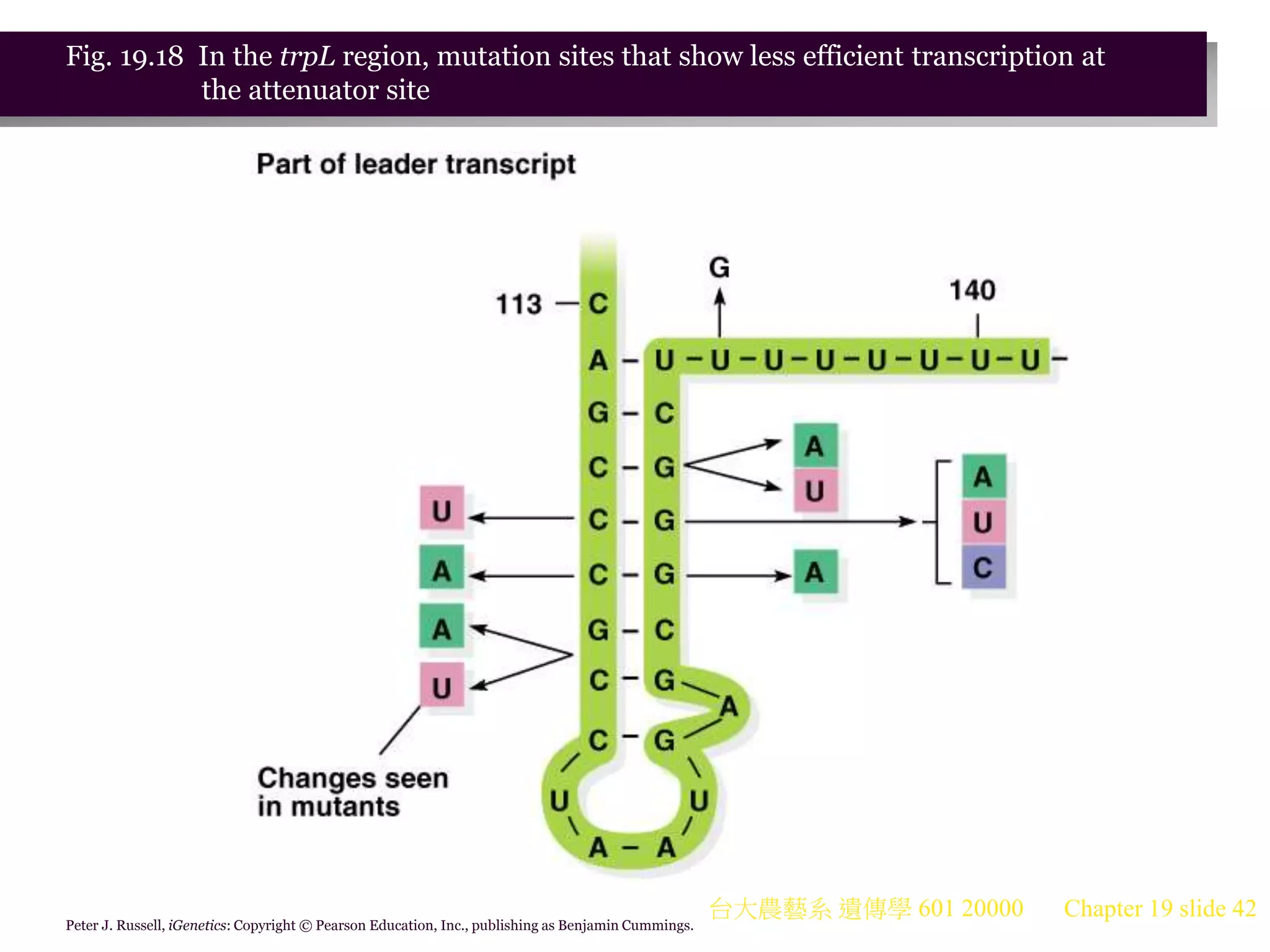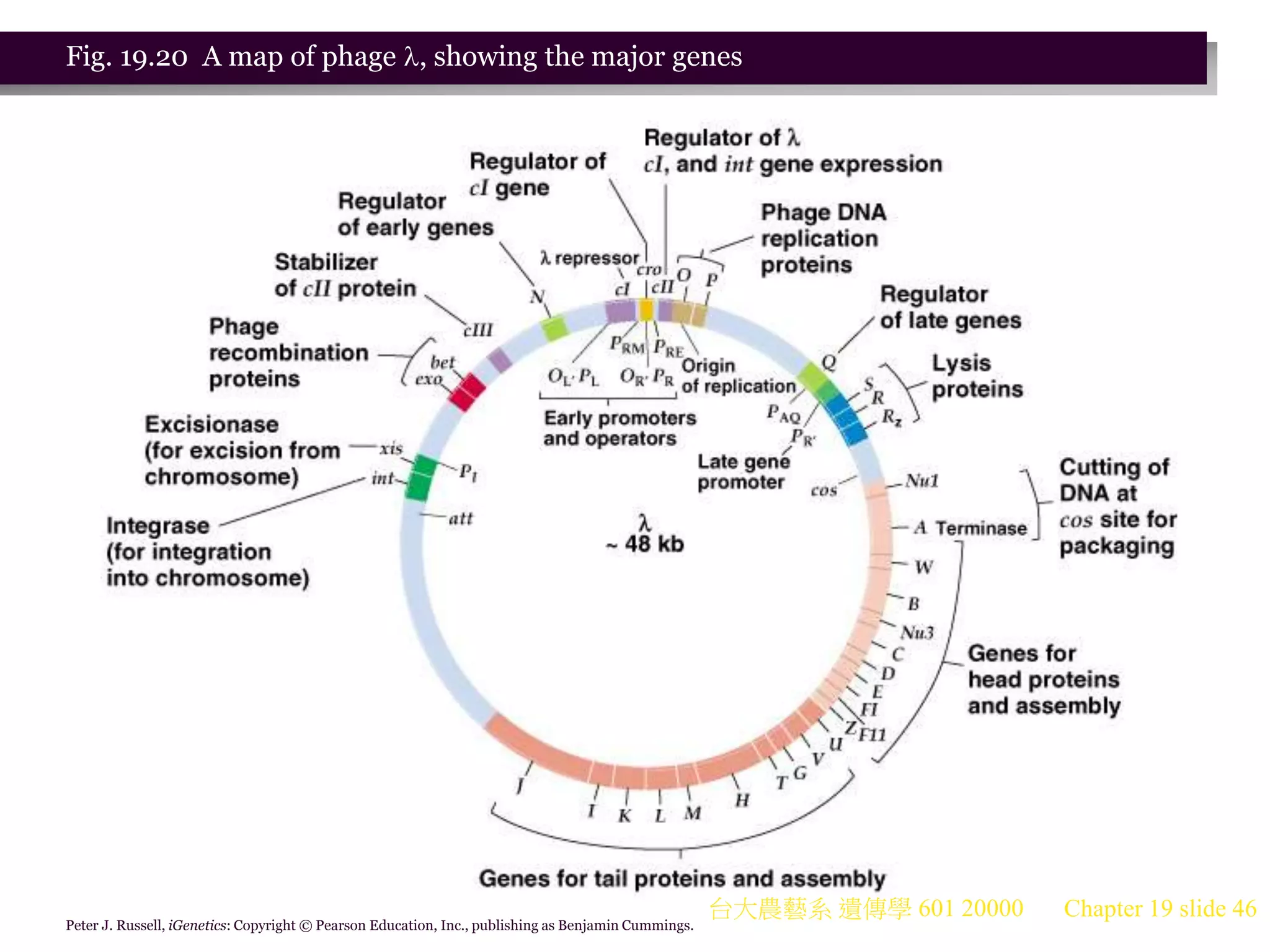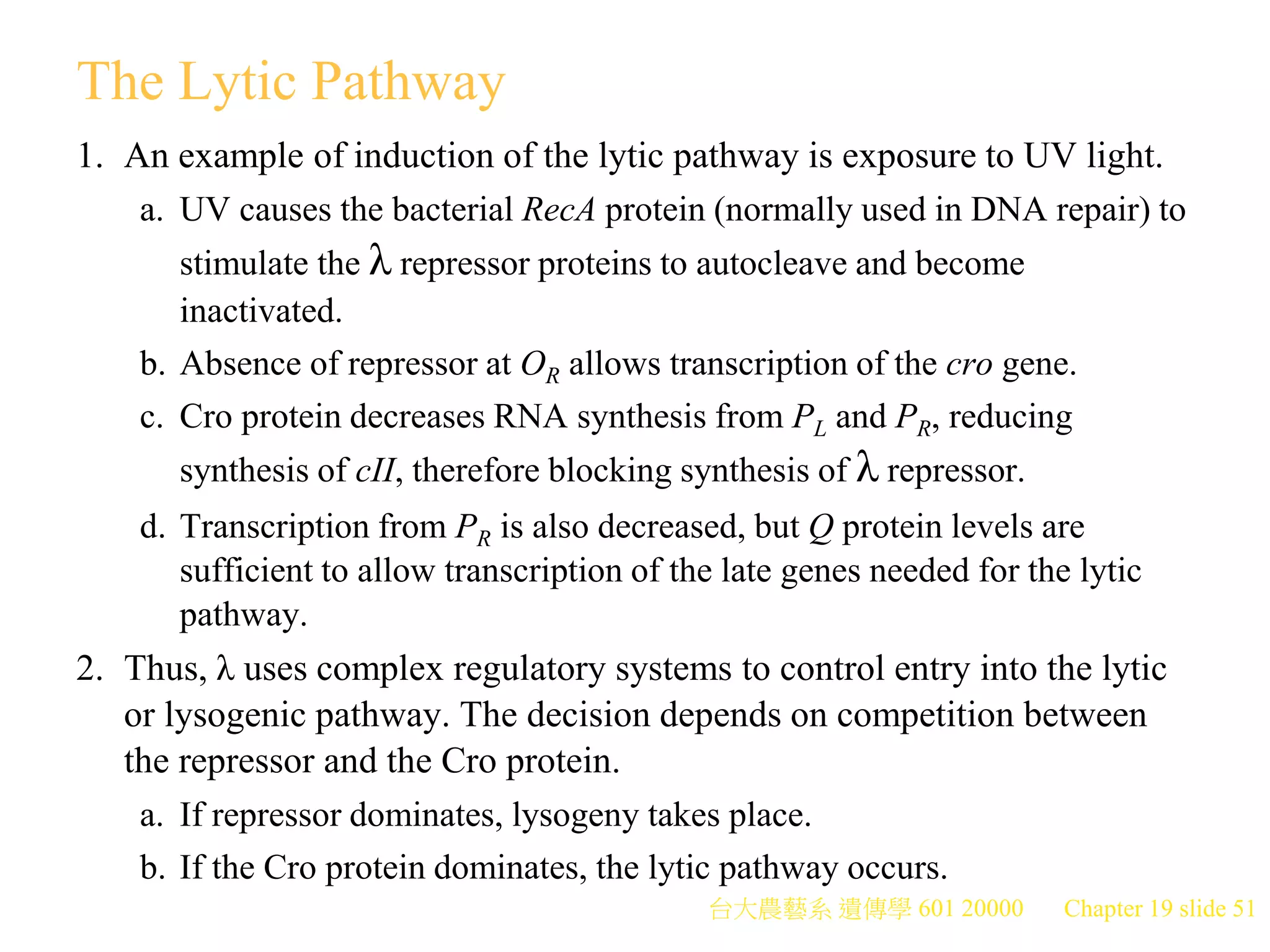1. The document discusses gene regulation in bacteria, focusing on the lac operon in E. coli. which controls lactose metabolism. 2. The lac operon contains 3 genes - lacZ, lacY, lacA - that are regulated together. When lactose is present, it is broken down into allolactose, which binds the lac repressor and prevents it from blocking transcription of the operon. 3. Experiments by Jacob and Monod identified mutations affecting regulation, including mutations in the operator or repressor gene that result in constitutive expression of the lac genes.
